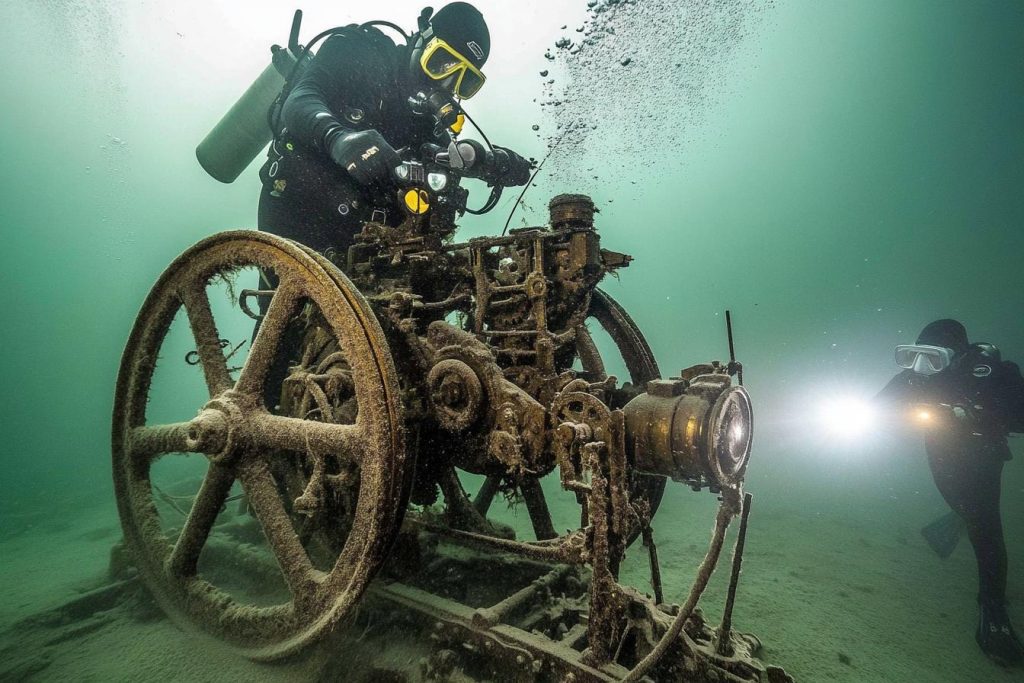
History often paints our ancestors as primitive, but scattered across ancient civilizations are technologies so advanced, they defy explanation. From intricate machines to impossible engineering feats, these innovations suggest knowledge far beyond what history books allow. Whether born of lost civilizations or forgotten wisdom, these technologies continue to baffle modern scientists. What did the ancients know that we’ve yet to rediscover?
The Antikythera Mechanism

Recovered from a shipwreck off the coast of Greece, the Antikythera Mechanism is a bronze device that functioned as an ancient analog computer. It could track celestial bodies, predict eclipses, and calculate astronomical positions with stunning accuracy. Its complexity wasn’t matched again until over a thousand years later, leaving scholars mystified about who made it and how. It challenges everything we thought we knew about ancient scientific capability.
Baghdad Battery

Discovered in modern-day Iraq, these clay jars with copper cylinders and iron rods may have functioned as primitive galvanic cells. When filled with an acidic liquid, they could produce a small electrical charge—essentially making them ancient batteries. The purpose is unclear: were they used for electroplating, medical treatment, or even spiritual rituals? Whatever the case, they show that ancient cultures may have dabbled in electricity long before Benjamin Franklin flew a kite.
Roman Concrete

Unlike modern concrete, which crumbles with time, Roman concrete grows stronger. Ancient engineers used a mix of volcanic ash, lime, and seawater to create a material that can endure for millennia—some Roman harbors still stand strong today. Scientists are still studying its self-healing properties and durability to replicate it in today’s construction. The formula was lost with the Empire, and its rediscovery could revolutionize modern architecture.
Vimana Flying Machines

Ancient Indian texts describe flying machines known as Vimanas, capable of aerial maneuvering and combat. These writings detail shapes, propulsion systems, and even anti-gravity-like flight—all described thousands of years before modern aviation. While many consider these mythological, the level of technical detail has sparked debate among historians and engineers. Could they have been metaphor, or evidence of something astonishingly real?
Ancient Drills and Machining

Archaeological finds in Egypt and South America suggest the use of precision drilling tools—far more advanced than simple chisels or hammers. Some granite and diorite artifacts show boreholes and smooth cuts that modern engineers admit are hard to replicate even today. The evidence points to a level of craftsmanship and tooling that remains unexplained. How could ancient cultures have machined stone harder than steel without modern technology?
Greek Fire

Used by the Byzantine Empire, Greek Fire was a terrifying incendiary weapon that could burn even on water. The exact formula remains unknown, lost to time and secrecy, but it gave the Byzantines a massive military advantage. Descriptions suggest it may have involved petroleum, quicklime, or sulfur, delivered via pressurized tubes. Modern chemistry still hasn’t fully decoded it, making it one of history’s most enigmatic weapons.
Maya Astronomical Calculators

The Maya developed incredibly accurate calendars and astronomical tables using a base-20 numbering system and advanced understanding of celestial cycles. Their predictions of solar eclipses and planetary movements were precise, rivaling later European models. Without telescopes or modern instruments, their knowledge of the cosmos remains inexplicable. Were they merely astute observers, or inheritors of a deeper knowledge?
The Nazca Hydraulic System

Beneath the arid deserts of Peru, the Nazca people constructed underground aqueducts known as puquios. These spiral-shaped tunnels tapped into subterranean water and used airflow to maintain pressure, allowing water to travel miles to the surface. Some still function today—centuries after they were built—demonstrating remarkable engineering. It’s a system so efficient that modern irrigation techniques have borrowed from its principles.
The Chinese South-Pointing Chariot

This ancient device functioned like a mechanical compass—without using magnetism. No matter how the chariot turned, a pointer on top always indicated south, thanks to a complex differential gear system. Developed during the Han Dynasty, it predates similar Western mechanisms by over a millennium. It’s a testament to Chinese innovation and a mystery as to how such mechanical sophistication existed so early.
When the Past Becomes the Future

These mind-bending technologies blur the lines between ancient history and futuristic vision. They force us to rethink the timeline of human advancement and question whether ancient civilizations possessed knowledge we’ve yet to reclaim. Were these breakthroughs products of isolated genius, lost civilizations, or even external influences? As we continue to explore the past, we may be uncovering not just what was—but what could be again.





